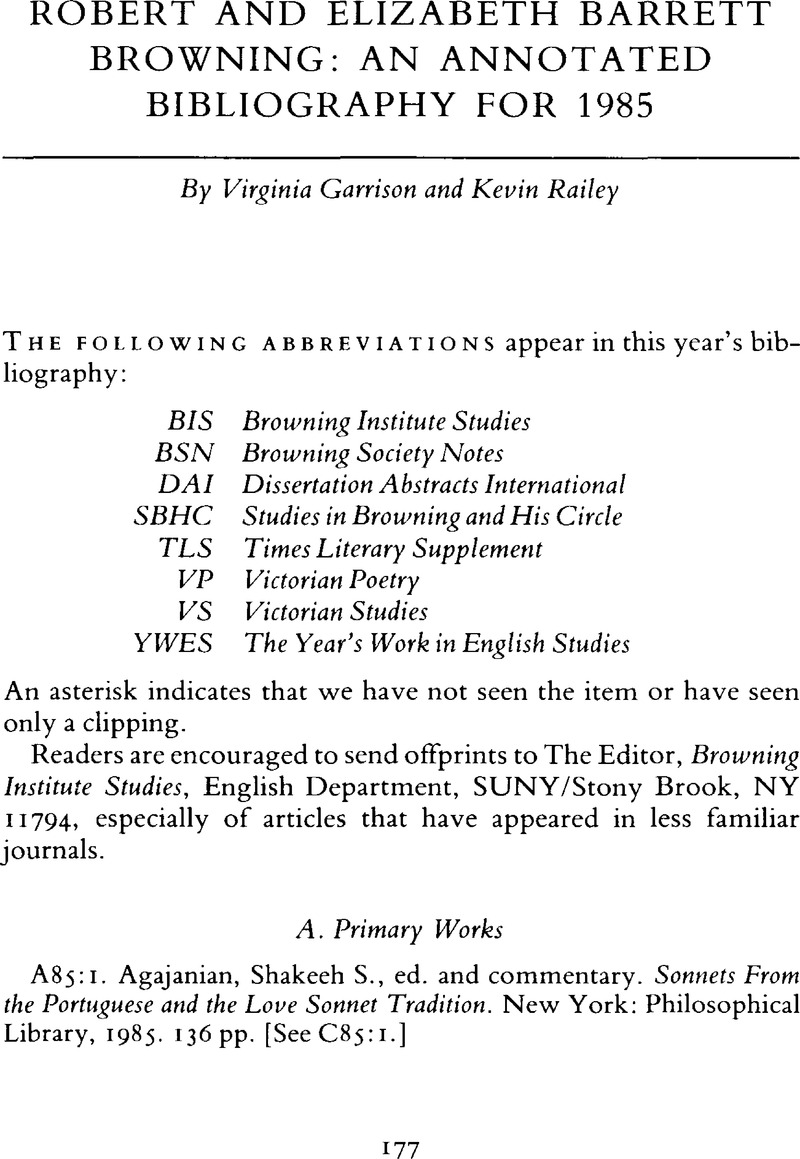C85:46.Parker, Patricia. “
Dante and the Dramatic Monologue.”
Stanford Literature Review 2 (
1985):
165–83. ¶ By the Victorian era, the
Commedia had become the supreme example of a poetry whose primary concern is with
human nature and characters. “It should hardly be surprising, then, if the example of Dante's ‘folk’ –…– should stand as a powerful model for the very generation … of the dramatic monologue as the self-consciously prismatic, or ‘dramatic,’ post-Romantic poetic genre it became” (183). Reference to
Men and Women, specifically “One Word More,” “The Bishop Orders His Tomb at St. Praxed's Church,” and T. S. Eliot.
Google Scholar 